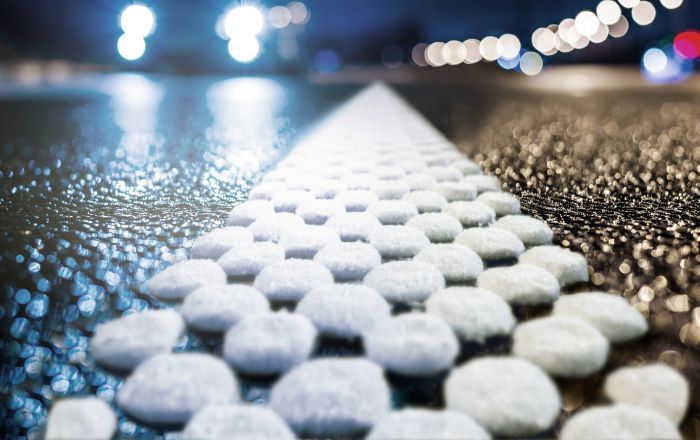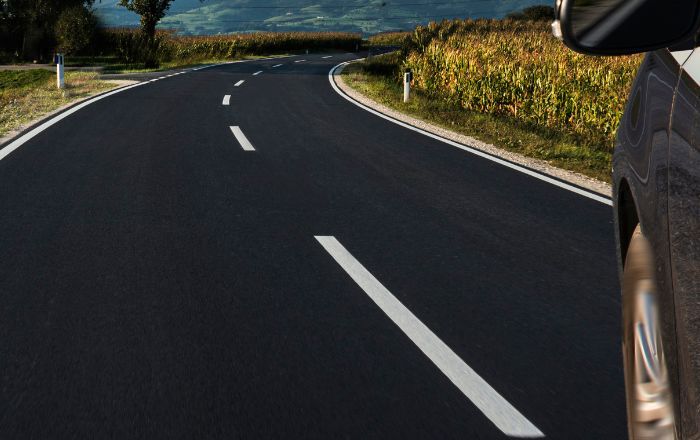Sustainable Markings for Safe Mobility
Road markings play a significant role in everyday life: they guide traffic, increase road safety and provide orientation – especially in urban areas. They structure traffic flow and mark paths and lanes. Particularly in cities with high traffic volumes and many unprotected road users, such as pedestrians and cyclists, they ensure that all road users reach their destination safely.
But which materials are best suited if cities are to be not only safe but also sustainable? This question was partially answered in a new publication from SWARCO Road Marking Systems: T.E. Burghardt: Sustainable road markings for sustainable urban mobility – selection guidelines based on environmental and durability parameters. Archives of Transport, 74(2), pp. 131–156 (2025).
The key finding of his research is that choosing the right material is crucial – both for the environmental impact and for the longevity of the markings.
Why sustainable road markings are important
Besides ensuring safety, it is also essential to consider ecological aspects when it comes to road markings: materials must be durable, release as few emissions as possible and minimise microplastic emissions.
The published research study compared several marking systems commonly used in Europe (solventborne and waterborne paints, (sprayed) MMA, and thermoplastic).
Criteria examined for Road Marking Systems
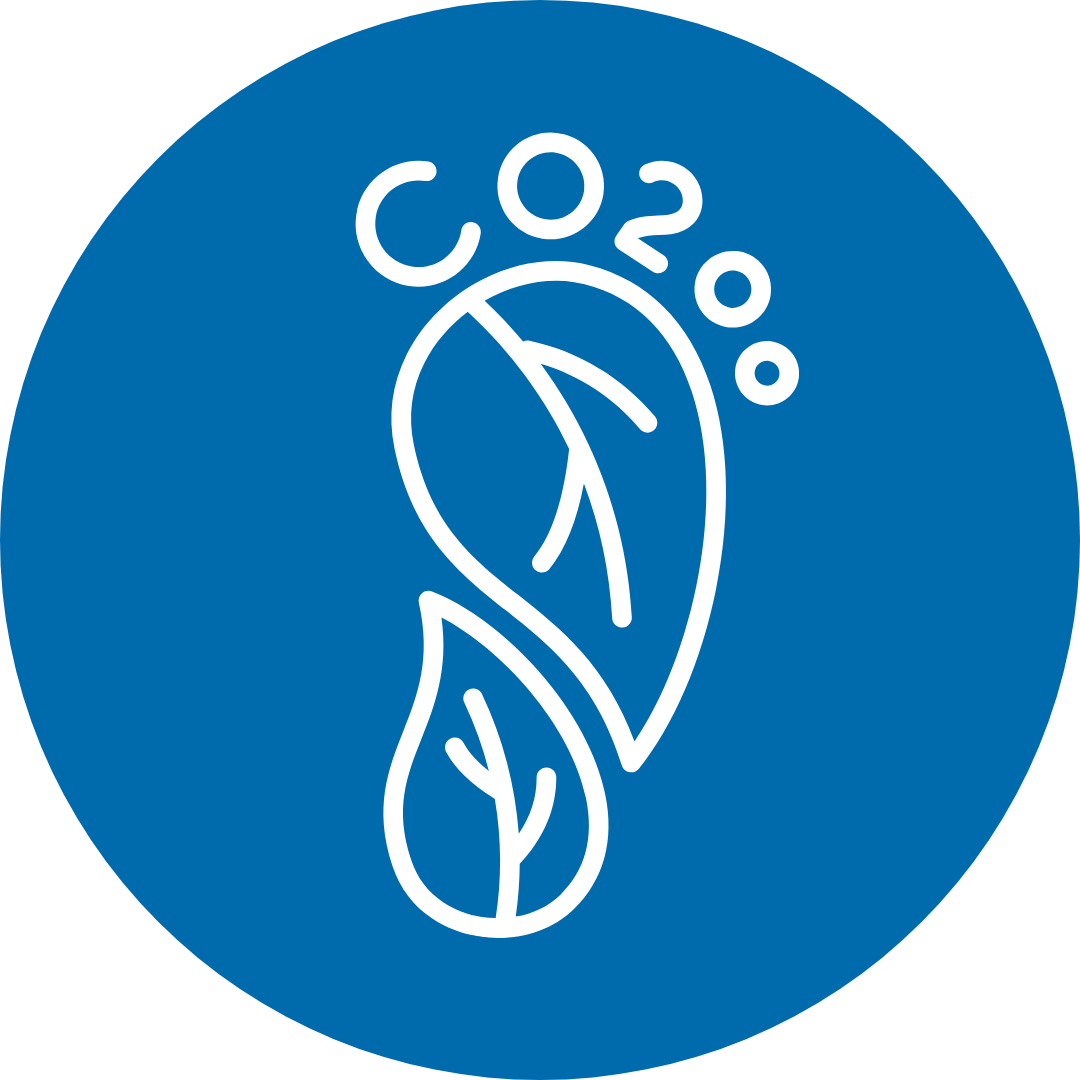
Carbon Footprint
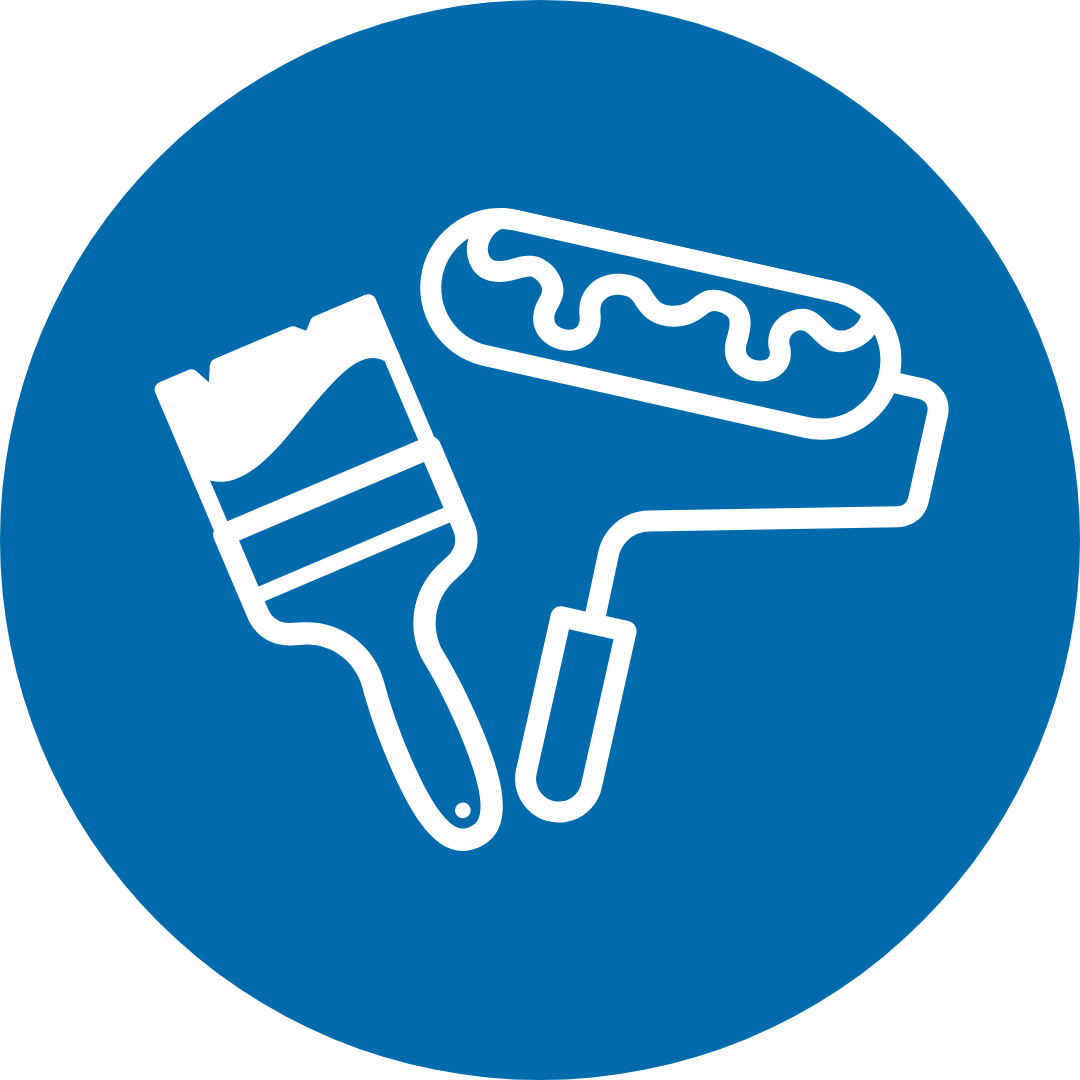
Ease of Application
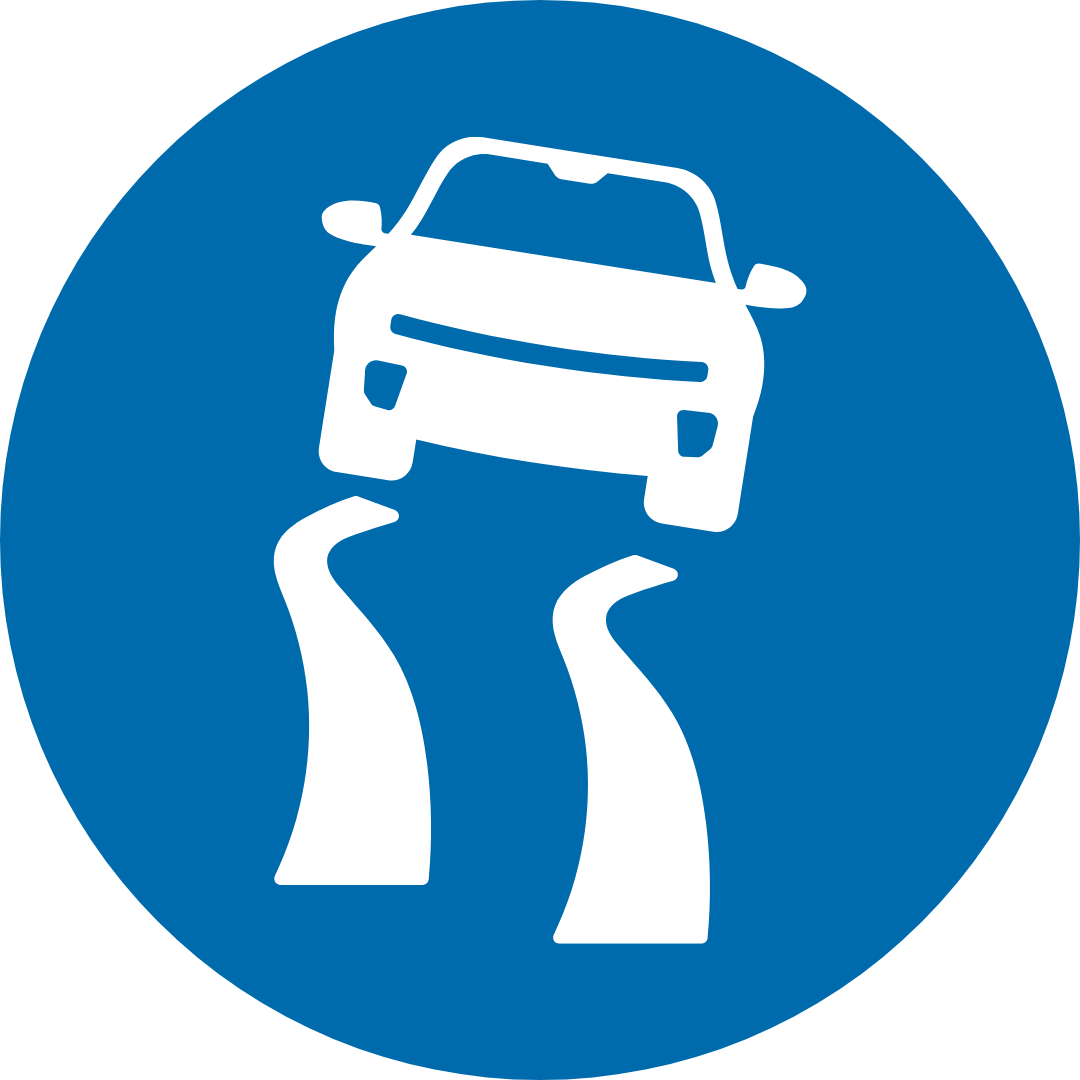
Skid Resistance

VOC Emissions

Microplastic Emissions

Particulate Emissions

Drying

Dirt pick-up & Discolouration

Costs
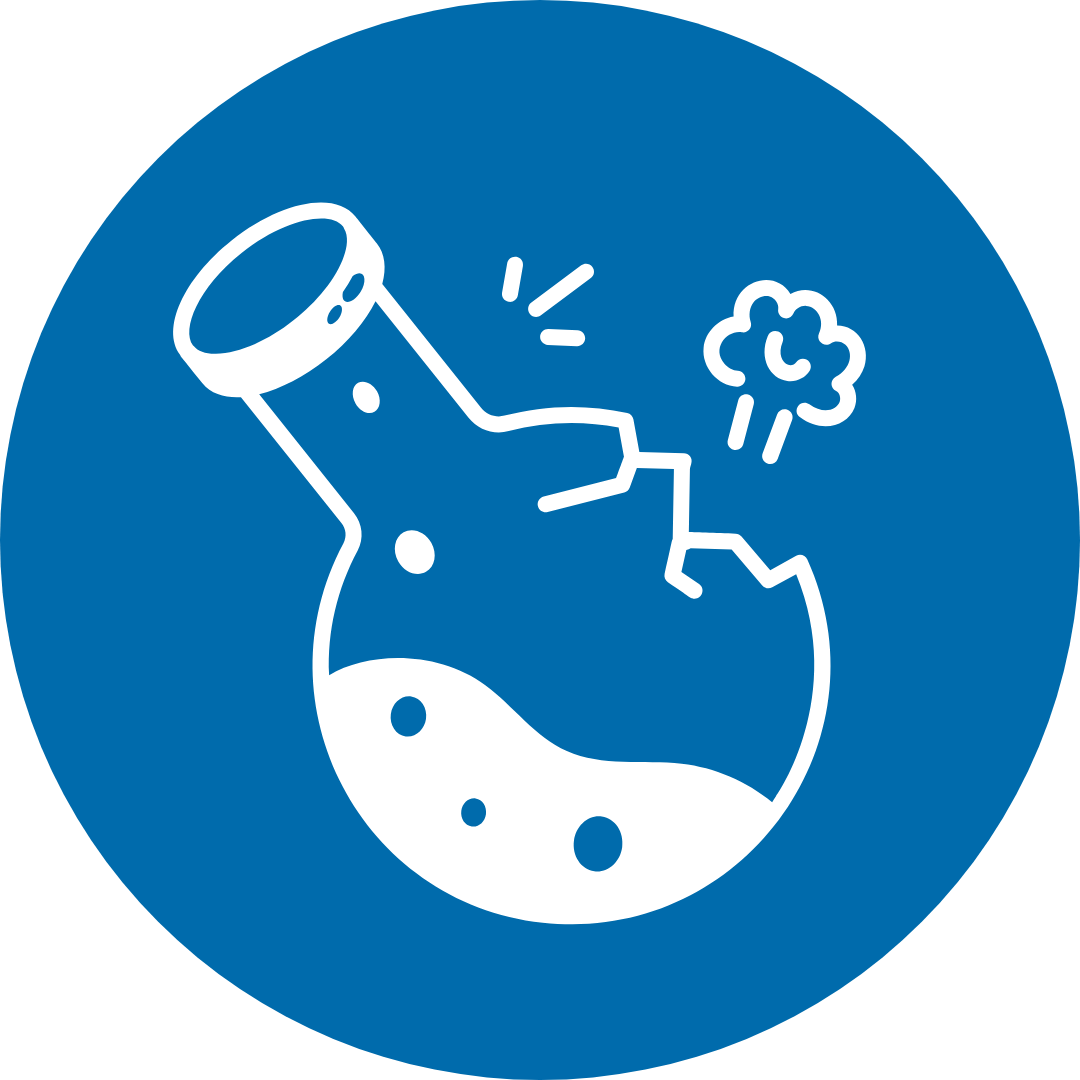
Hazardous Ingredients

Durability (Service Life)
Some of these functional and environmental parameters had to be deliberately excluded from the evaluation, as they were either not quantifiable, inconsistently measurable, or of limited relevance for urban environments.
Analyses reveals significant Differences within range of Marking Materials
MMA
Systems
Sustainable Solution
MMA is characterised by:
Exceptional Durability – less maintenance and replacement is required
Good Skid Resistance – increased safety for pedestrians and cyclists
Low Carbon Footprint and Low Microplastic Emissions
High Visibility Day and Night
Thermoplastic
Systems
Proven Durability
Thermoplastic materials offer good visibility and durability, but may contribute to particulate pollution.
Waterborne Paints
Ideal for Side Streets
These environmentally sound materials are inexpensive and quick to apply, but are only suitable for areas with low traffic loads.
Suggested Marking Systems based on Application Area
Main Roads | Pedestrian Crossings | Cycle Paths | Side Streets & Squares | |
Recommended Materials | Structured MMA Systems | Roller Plastics | Coloured MMA or Thermoplastic Systems | Water-based Paints or MMA Spray |
Main Advantages | High visibility, | Maximum slip resistance | Good signalling effect, high skid resistance, long service life | Environmentally sound & cost-effective |
Durability pays off
The conclusion is that those who rely on durable materials are acting sustainably. Related analyses confirmed that it would also be the most economical solution. The less frequently road markings need to be renewed, the lower the environmental impact – and, in the long term, the lower the costs.
Road markings are more than just lines on asphalt – they are a key element in safe, clean and sustainable mobility. Research confirms that MMA is the most sustainable solution for cities that rely on durable, environmentally sound and low-maintenance systems. Investing in sustainable road markings lays the foundation for safe transport systems – and thus for the liveable cities of tomorrow.
Which material is considered particularly sustainable in urban areas?
Based on the presented evaluation, structured MMA (including roll plastic and bicycle lane plastic) is regarded as a highly sustainable option for urban areas.
What advantages does MMA offer, according to the results of the presented study?
It is solvent-free, provides high skid resistance, can be applied conveniently by hand, and, above all, offers excellent abrasion resistance, enabling long-term durability.
Where is MMA most suitable?
Primarily on busy roads, intersections, pedestrian crossings, and bicycle lanes.
What does ‘sustainability through durability’ mean?
The longer a marking lasts, the less often it needs to be renewed – this saves resources and reduces environmental impact.
What MMA does SWARCO have in its range?
You can find an overview of the extensive MMA portfolio from SWARCO Road Marking Systems here.
Does SWARCO have its own environmentally sound marking materials?
At SWARCO Road Marking Systems, we strive to produce marking materials that are as environmentally sound as possible, whether through energy-efficient production processes or the use of bio-based and recycled ingredients. Such marking systems are grouped under the SWARCO ECO-LINE product line.
Which products are part of the SWARCO ECO-LINE?
The SWARCO ECO-LINE includes materials for a wide range of applications – from water-based paints and MMA Spray to preformed thermoplastics. Performance for the environmentally conscious!
About SWARCO Road Marking Systems
Quality products and services from SWARCO Road Marking Systems guide traffic safely from A to B by day and, above all, by night. On all types of roads. Whatever the weather. From a single source. Over 5,000 customers in more than 80 countries place their trust in them.

